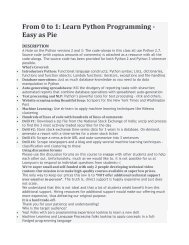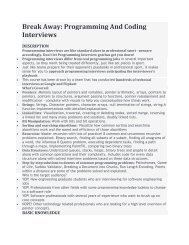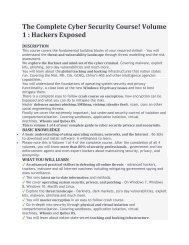Fundamentals Of PythonLearn Python Programming Fundamentals: A Beginner’s Guide [Updated 2020]
Python is one of the powerful, high-level, easy to learn programming language that provides a huge number of applications. Some of its features, such as being object-oriented and open source, having numerous IDE’s, etc. make it one of the most in-demand programming languages of the present IT industry. According to TIOBE index, as of January 2020, Python is one of the popular programming languages. By looking at the popularity of this programming language, many IT professionals, both beginners as well as experienced alike, are willing to build their career as a Python developer.
Python is one of the powerful, high-level, easy to learn programming language that provides a huge number of applications. Some of its features, such as being object-oriented and open source, having numerous IDE’s, etc. make it one of the most in-demand programming languages of the present IT industry. According to TIOBE index, as of January 2020, Python is one of the popular programming languages. By looking at the popularity of this programming language, many IT professionals, both beginners as well as experienced alike, are willing to build their career as a Python developer.
You also want an ePaper? Increase the reach of your titles
YUMPU automatically turns print PDFs into web optimized ePapers that Google loves.
2. Classes:
Python is an Objected Oriented programming language. This language supports classes and
objects. A class is an abstract data type. An object is a real world entity and an instance of a
class.
3. Modules:
A collection of related classes and functions can be called as a module. These are some of
the different types of modules:
• mathematical calculations
• string calculations
• web programming, etc.
4. Packages: Python package is a collection of related modules. Developers can either
import a package or can develop their own.
5. Lists: Lists can be a collection of values. They are declared in the CSV (Comma Separated
Values) format and enclosed in square brackets.
Python identifiers:
Python identifier is a name that is used to identify a variable, function, class, module or
other object. It helps to differentiate one entity from another.
Some of the rules for writing identifiers are as follows:
Did You Know?: “Python is a case-sensitive language. In Python myname and Myname
are not the same.”


![Fundamentals Of PythonLearn Python Programming Fundamentals: A Beginner’s Guide [Updated 2020]](https://documents.yumpu.com/000/063/046/527/f0516a015f019ca4368fd90227e78fc7cb4565d8/476654634854445a3572432b6e4a63456d67613139513d3d/6b6f465461724f5a376251686e4470316754334667673d3d.jpg?AWSAccessKeyId=AKIAICNEWSPSEKTJ5M3Q&Expires=1718946000&Signature=vPWeqx4ZMJj11VjRmijXw6g6vVo%3D)







